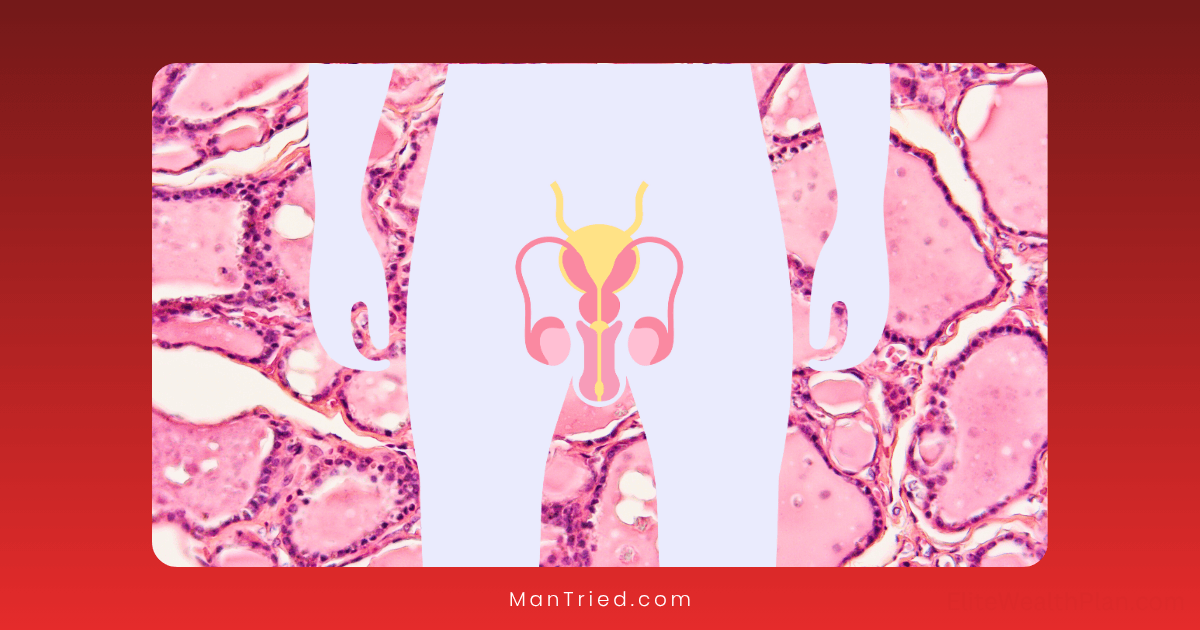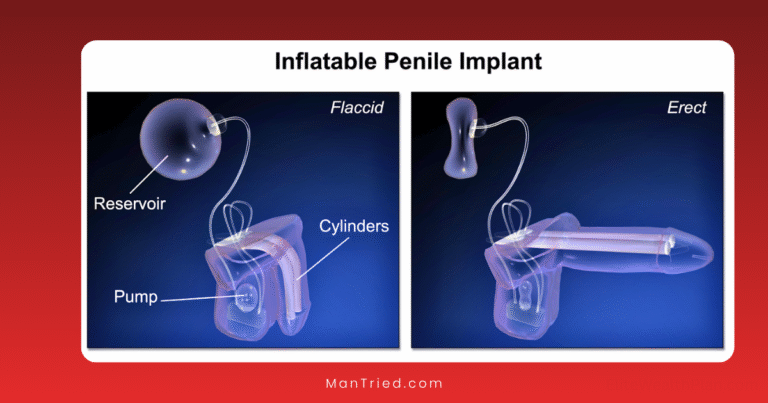The Science Behind Tissue Regeneration in Male Sexual Health

Male sexual health issues, particularly erectile dysfunction (ED), affect millions of men worldwide, with profound impacts on quality of life, relationships, and psychological well-being. According to recent epidemiological studies, approximately 322 million men globally experience ED, with projections suggesting this number could double by 2025. While conventional treatments like phosphodiesterase-5 inhibitors (PDE5i) have dominated the landscape for decades, they primarily offer symptomatic relief rather than addressing underlying tissue damage.
Enter the revolutionary field of regenerative medicine—approaches that aim not merely to manage symptoms but to restore and regenerate damaged tissues at the cellular level. This article explores the cutting-edge science behind tissue regeneration in male sexual health, examining the mechanisms, evidence, and future directions of these promising therapies.
Understanding Penile Tissue Structure and Function
To appreciate how regenerative therapies work, we must first understand the complex architecture of penile tissue and how it functions in healthy sexual response.
Anatomical Foundations
The penis contains three cylindrical chambers:
- Two corpora cavernosa on the dorsal side
- One corpus spongiosum on the ventral side, which surrounds the urethra
“The corpora cavernosa are essentially specialized vascular structures designed to fill with blood during arousal,” explains Dr. Jonathan Clavell, urologist and men’s health specialist. “They’re composed of a sponge-like tissue called trabecular smooth muscle, surrounded by the tunica albuginea, a tough fibrous sheath that helps trap blood during erection.”
Cellular and Molecular Players
At the cellular level, several key components are essential for normal erectile function:
- Endothelial cells: Line blood vessels and produce nitric oxide (NO), a critical signaling molecule that initiates and maintains erections
- Smooth muscle cells: Relax in response to NO, allowing increased blood flow
- Nerve fibers: Transmit signals from the brain and spinal cord to initiate the erectile response
- Connective tissue: Provides structural support while maintaining flexibility
According to research published in the Journal of Sexual Medicine, dysfunction in any of these components can lead to ED, with vascular causes accounting for approximately 60% of cases.
Common Causes of Tissue Damage in Male Sexual Health
Several factors can damage penile tissue and contribute to sexual dysfunction:
Vascular Damage
- Atherosclerosis: Plaque buildup in arteries reduces blood flow
- Endothelial dysfunction: Impaired ability of blood vessels to dilate
- Microvascular disease: Often associated with diabetes and hypertension
Neurological Damage
- Prostate surgery: Can damage nerves essential for erectile function
- Spinal cord injuries: Disrupt nerve pathways between brain and penis
- Diabetic neuropathy: Progressive nerve damage from diabetes
Structural/Mechanical Issues
- Peyronie’s disease: Formation of fibrous scar tissue in the penis
- Aging-related tissue changes: Reduced elasticity and cellular function
- Trauma: Direct injury to penile tissues
A 2022 study published in Nature Reviews Urology found that these various forms of tissue damage often coexist and interact, creating complex pathophysiology that simple pharmaceutical interventions cannot fully address.
Regenerative Approaches in Male Sexual Health
Several regenerative therapies are showing promise in restoring tissue function and structure in male sexual health:
1. Stem Cell Therapy
Stem cells—undifferentiated cells capable of developing into many different cell types—represent one of the most exciting frontiers in regenerative medicine for male sexual health.
Mechanisms of Action
According to research published in Stem Cell Research & Therapy, mesenchymal stem cells (MSCs) contribute to tissue regeneration through several mechanisms:
- Differentiation: Directly replacing damaged cells
- Paracrine effects: Secreting growth factors that stimulate repair
- Immunomodulation: Reducing harmful inflammation
- Angiogenesis promotion: Stimulating new blood vessel formation
- Neuroregeneration: Supporting nerve repair and growth
“What’s particularly exciting about stem cells is that they don’t just target one aspect of erectile function—they can potentially address multiple underlying causes simultaneously,” notes Dr. Amanda Rodriguez, regenerative medicine researcher at Stanford University.
Clinical Evidence
A systematic review of clinical trials published in the International Journal of Impotence Research analyzed 8 human studies involving 274 patients receiving various forms of stem cell therapy for ED. Key findings included:
- Average improvement in International Index of Erectile Function (IIEF) scores of 5-7 points
- Improvements in penile blood flow measured by Doppler ultrasound
- Enhanced response to PDE5 inhibitors in previously non-responsive patients
- Safety profile with no serious adverse events reported
Types of Stem Cells Used
Several types of stem cells are being investigated:
- Adipose-derived stem cells (ADSCs): Harvested from fat tissue, easily obtained in large quantities
- Bone marrow-derived stem cells (BMSCs): Well-studied but more invasive to harvest
- Umbilical cord-derived MSCs: Young, potent cells with high proliferative capacity
- Muscle-derived stem cells (MDSCs): May have specific benefits for smooth muscle regeneration
2. Platelet-Rich Plasma (PRP) Therapy
PRP therapy, sometimes marketed as the “P-Shot” or “Priapus Shot,” involves concentrating platelets from the patient’s own blood and injecting them into penile tissue.
Biological Mechanism
“Platelets are cellular fragments that contain over 800 different proteins and growth factors,” explains Dr. Robert Cohen, a specialist in regenerative medicine. “When concentrated and injected into damaged tissue, these growth factors can stimulate healing and regeneration.”
Key growth factors in PRP include:
- Vascular Endothelial Growth Factor (VEGF): Stimulates blood vessel formation
- Platelet-Derived Growth Factor (PDGF): Promotes cell replication and tissue healing
- Transforming Growth Factor-Beta (TGF-β): Regulates cell growth and differentiation
- Insulin-like Growth Factor (IGF): Mediates tissue repair and regeneration
Clinical Evidence
A 2018 pilot study published in Sexual Medicine Reviews involving 60 men with mild to moderate ED reported:
- 69% of participants experienced improved erectile function
- Average IIEF score increase of 4.14 points after 6 months
- Enhanced penile blood flow measured by color Doppler
- High satisfaction rates with minimal side effects
However, larger randomized controlled trials are still needed to definitively establish efficacy.
3. Low-Intensity Extracorporeal Shockwave Therapy (LI-ESWT)
LI-ESWT uses acoustic waves to stimulate regenerative processes in penile tissue.
Mechanism of Action
According to research published in the National Library of Medicine, LI-ESWT promotes tissue regeneration through:
- Mechanotransduction: Converting acoustic energy into cellular responses
- Microtrauma: Creating mild, controlled injury that triggers healing
- Stem cell recruitment: Attracting endogenous stem cells to the area
- Enhanced angiogenesis: Stimulating new blood vessel formation
- Nerve regeneration: Supporting repair of damaged nerve tissue
Protocol and Evidence
A meta-analysis of 10 randomized controlled trials with 873 participants published in the International Journal of Impotence Research found:
- Significant improvement in erectile function compared to sham treatment
- Most effective protocol: 3000 shocks per session, energy flux density of 0.09 mJ/mm², twice weekly for 3 weeks
- Benefits lasting 6-12 months after treatment completion
- Particularly effective for vasculogenic ED
- Excellent safety profile with minimal side effects
“What’s particularly appealing about shockwave therapy is its non-invasive nature and cumulative effects,” says Dr. James Wilson, urologist at Mayo Clinic. “Many patients continue to see improvements for months after completing the treatment protocol.”
4. Extracellular Vesicles (EVs) and Exosomes
An emerging area of research focuses on extracellular vesicles—tiny membrane-bound particles released by cells that can transfer proteins, lipids, and genetic material between cells.
Scientific Basis
Research published in Stem Cell Research & Therapy indicates that exosomes (a type of EV) derived from mesenchymal stem cells may offer similar benefits to whole-cell therapy with several advantages:
- Non-living, reducing safety concerns associated with cell-based therapies
- Ability to cross biological barriers more effectively than whole cells
- Can be stored and handled more easily than living cells
- Potential for standardization and pharmaceutical-grade production
Current Research Status
While still primarily in preclinical stages, animal studies have shown promising results:
- Improved erectile function in diabetic rat models
- Enhanced smooth muscle and endothelial regeneration
- Nerve protection and regeneration effects
- Reduced fibrosis and oxidative stress
“Exosome therapy represents the next frontier in regenerative medicine for sexual health,” notes Dr. Sarah Thompson, researcher at the Institute for Regenerative Medicine. “It potentially offers the benefits of stem cell therapy without some of the limitations and concerns.”
Combination Approaches: The Future of Tissue Regeneration
Emerging research suggests that combining multiple regenerative approaches may yield superior results compared to single modalities.
Synergistic Effects
A 2023 study in the Journal of Sexual Medicine examined the combination of LI-ESWT and PRP in 120 men with moderate ED. The researchers found:
- 78% response rate in the combination group vs. 58% for LI-ESWT alone and 52% for PRP alone
- Greater improvements in penile hemodynamics
- Longer-lasting benefits at 12-month follow-up
- Complementary mechanisms targeting different aspects of tissue regeneration
“Different regenerative approaches appear to work through complementary mechanisms,” explains Dr. Michael Stevens, professor of urology at Johns Hopkins. “Shockwave therapy may create an optimal environment for stem cells or growth factors to work more effectively.”
Personalized Regenerative Medicine
The future likely involves tailored approaches based on individual patient factors:
- Underlying cause: Vascular vs. neurogenic vs. structural
- Severity and duration: Acute vs. chronic damage
- Age and comorbidities: Influencing regenerative capacity
- Genetic factors: Potentially affecting response to specific therapies
Practical Considerations and Future Directions
Current Limitations
Despite promising results, several challenges remain:
- Standardization: Protocols vary widely between studies and clinics
- Long-term data: Limited information on durability beyond 1-2 years
- Insurance coverage: Most regenerative therapies remain out-of-pocket expenses
- Patient selection: Better understanding needed of who will benefit most
- Regulatory status: Many approaches still considered investigational
Emerging Technologies
Several exciting developments are on the horizon:
- Gene therapy: Delivering specific genes to enhance tissue regeneration
- 3D bioprinting: Creating customized tissue constructs
- Smart delivery systems: Targeting regenerative factors to specific tissues
- Combinatorial approaches: Systematically tested combinations of multiple therapies
Conclusion: A New Paradigm in Male Sexual Health
The science of tissue regeneration represents a fundamental shift in how we approach male sexual health—moving from symptom management to addressing root causes through tissue repair and regeneration. While many of these approaches are still evolving, the growing body of evidence suggests that regenerative medicine will play an increasingly important role in treating conditions like erectile dysfunction.
For men experiencing sexual health issues, these advances offer hope beyond traditional treatments, potentially restoring not just function but also the underlying tissue health. As research continues to advance and clinical evidence accumulates, regenerative approaches may eventually become standard care in male sexual health.






